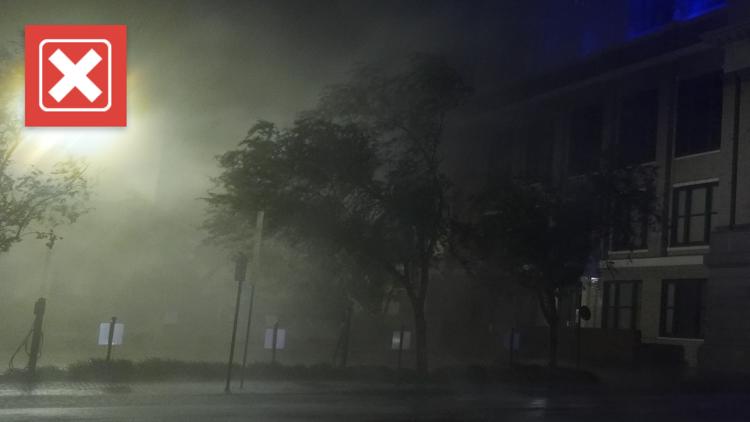Meteorologists aren’t referring to the last time a storm of this magnitude happened when they say “100-year” or “1,000-year storm.” We VERIFY what the term means.


Hurricane Milton was a rare storm from the very beginning. Storms that form in the western Gulf of Mexico rarely move east into Florida’s Gulf Coast, the storm intensified at a near-record pace to near-record strength, and it struck near the Tampa Bay area, which has rarely been hit directly by a major hurricane.
Meteorologist Matthew Cappucci posted to X how Milton was a rare storm in another way, too: The storm dumped over five inches of rain over St. Petersburg in one hour, which Cappucci said is “more rare than a thousand-year rain event.”
But some people replied to the post with confusion over the term “thousand year rain event.” One person asked how they could measure rain from 1,000 years ago. “So, the last time Florida rained this much, it wasn't even Florida yet?” another person asked. One person said to take the term with a grain of salt because St. Petersburg has only been around for about 100 years, and accurate rain records have only been possible over the last 50 years or so, the person claimed.
THE QUESTION
Do “1,000-year storms” only happen once every 1,000 years?
THE SOURCES
THE ANSWER
![]()
No, “1,000-year storms” do not happen only once every 1,000 years.
WHAT WE FOUND
When meteorologists talk about “100-year floods” or “1,000-year storms,” they don’t mean these weather events haven’t happened for 100 or 1,000 years. The term refers to the chance such a flood or a storm might happen in any given year.
A 1,000-year weather event, such as a rainfall, is one that statistically has a 1 in 1,000 chance of happening in any given year, the U.S. Geological Survey (USGS) says. The probability of a rainfall of that magnitude or greater happening in any given year is 0.1%.
A 2016 news post by the National Oceanic and Atmospheric Administration (NOAA) explains that this is calculated using existing data, however far back that may go. Even if there is just 80 years of weather data in a given area, scientists can still graph the data of those 80 years to get an estimate of just how likely certain weather events are to happen.
If, for example, there was more than five inches of rain in a single day just once in those 80 years, scientists can estimate that it’s highly unlikely there will be a storm that produces more than five inches of rain in a single day during any given year.
By plotting out all of the data they have available to them, scientists can estimate which max rainfall amounts are most likely and fill in the blanks with estimates. So even if their data doesn’t include a day with 10 inches of rain, scientists can still predict the likelihood of such a storm happening in a year.
But these are estimates usually with only a century or so of data. And even if scientists had access to the weather everywhere for every single year of history, nothing ever perfectly follows probability and the climate isn’t static.
If a flood is a 100-year flood, that means there is a 1% chance of a flood of that magnitude each year, the USGS says. Such a flood has the same 1% chance of occurring each year. A 100-year flood isn’t any less likely the year after the 100-year flood actually happens; there was a 1% chance of the flood the year it happened and there will still be a 1% of the flood happening again the year after.
However, probabilities are only consistent if the climate is consistent. The problem is that the climate is still changing.
“The frequency and intensity of heavy precipitation events have increased since the 1950s over most land areas for which observational data are sufficient for trend analysis,” the Intergovernmental Panel on Climate Change (IPCC) said in its 2023 climate report.
That means the probability of an extreme storm with heavy rainfall is higher in 2024 than it has been for most of the past 100 years, which is the data scientists would use to estimate 100-year and 1,000-year storms. So it’s more likely that we’ll see historic weather events more often as the climate continues to change.
The VERIFY team works to separate fact from fiction so that you can understand what is true and false. Please consider subscribing to our daily newsletter, text alerts and our YouTube channel. You can also follow us on Snapchat, Instagram, Facebook and TikTok. Learn More »
Follow Us
Want something VERIFIED?
Text: 202-410-8808
.png)









 English (US) ·
English (US) ·